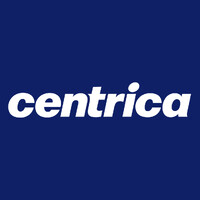
Centrica
Centrica is an international energy services and solutions company, founded on a 200-year heritage of serving customers in homes and businesses. We supply energy and services to over 10 million customers, mainly in the UK and Ireland, through brands such as British Gas, Bord Gáis Energy and Centrica Business Solutions. Through our trusted brands, we deliver innovative energy and services solutions to help solve customers’ needs, supported by thousands of engineers and technicians. We are committed to energising a greener, fairer future.






